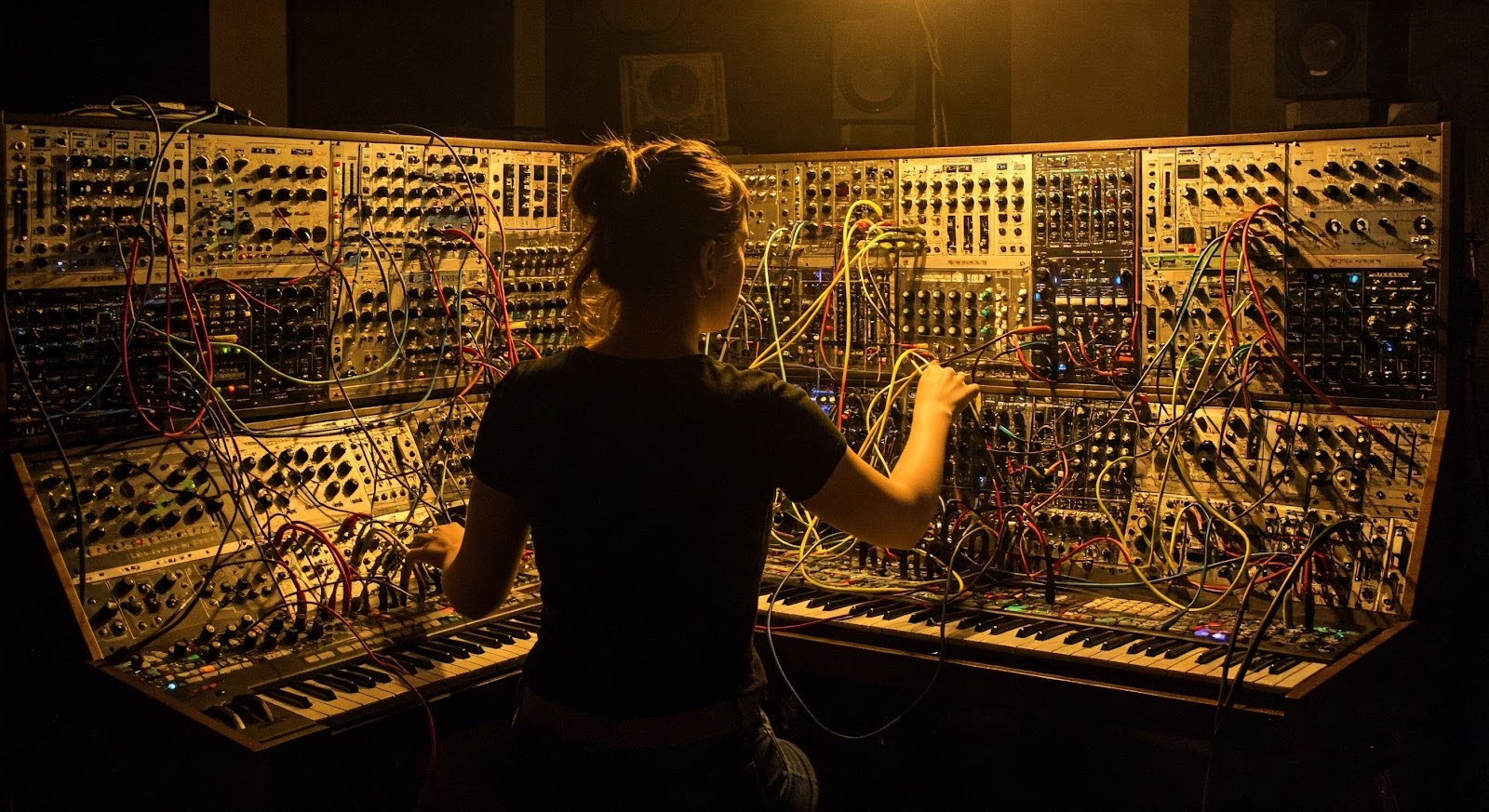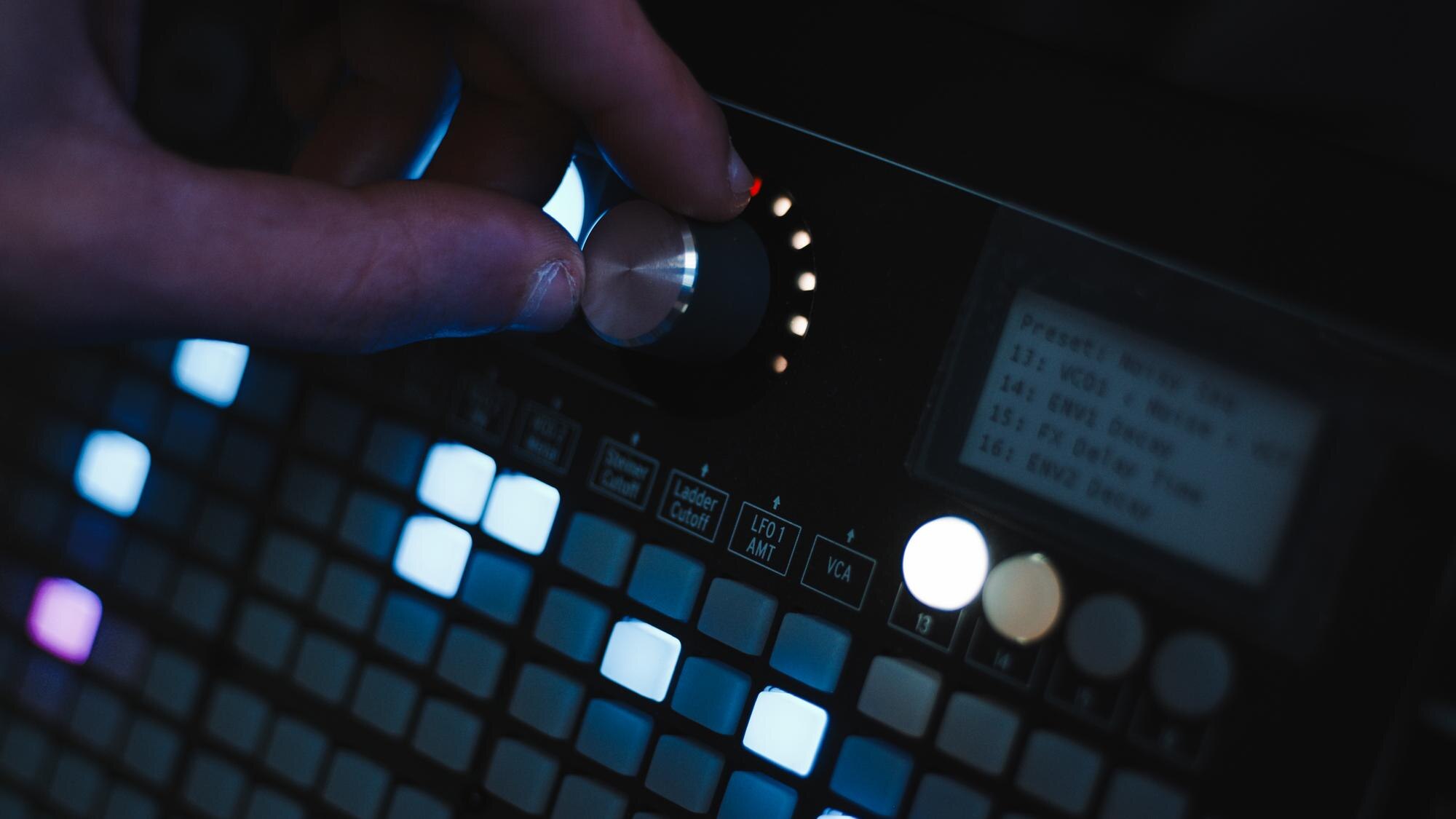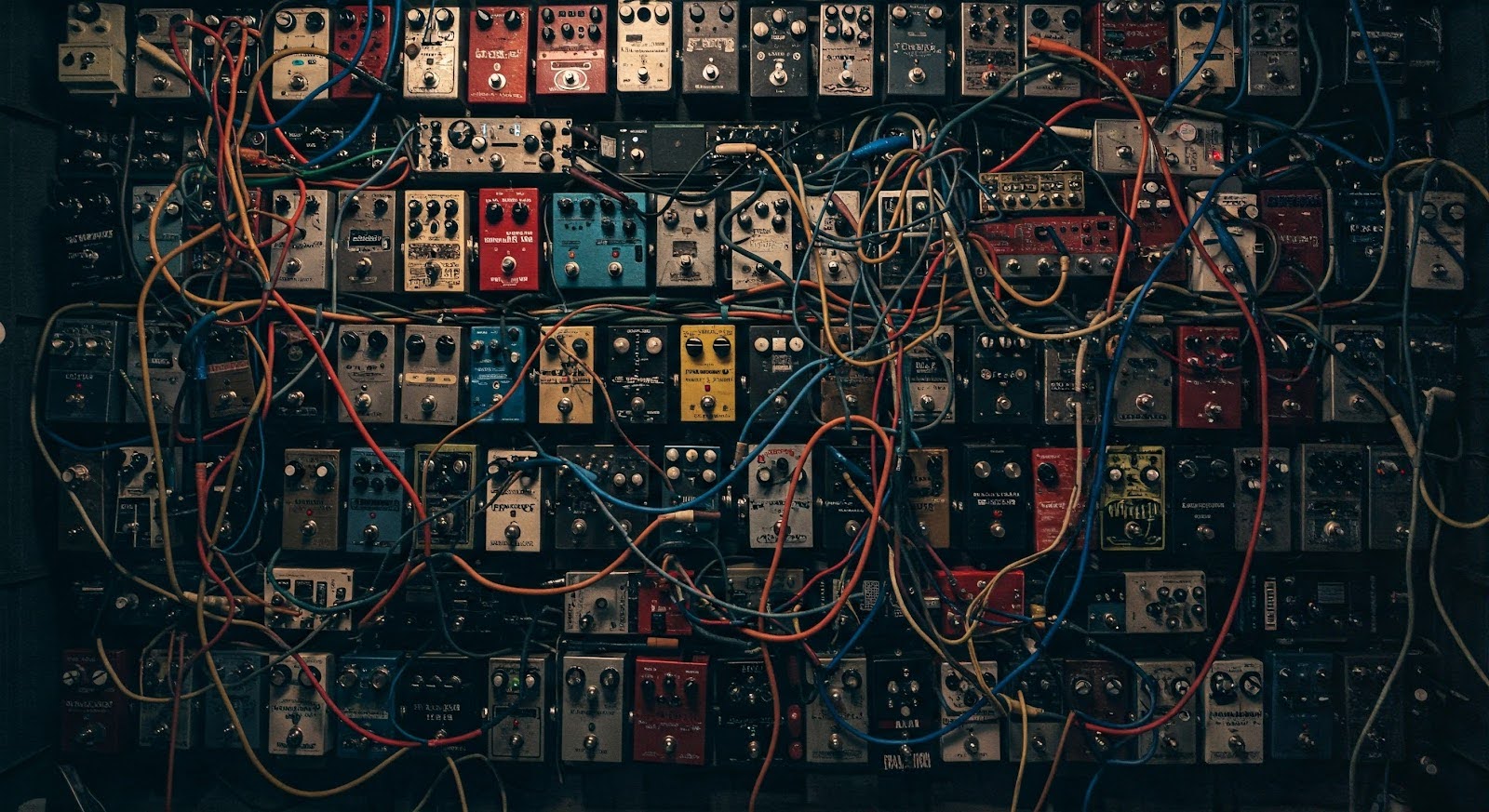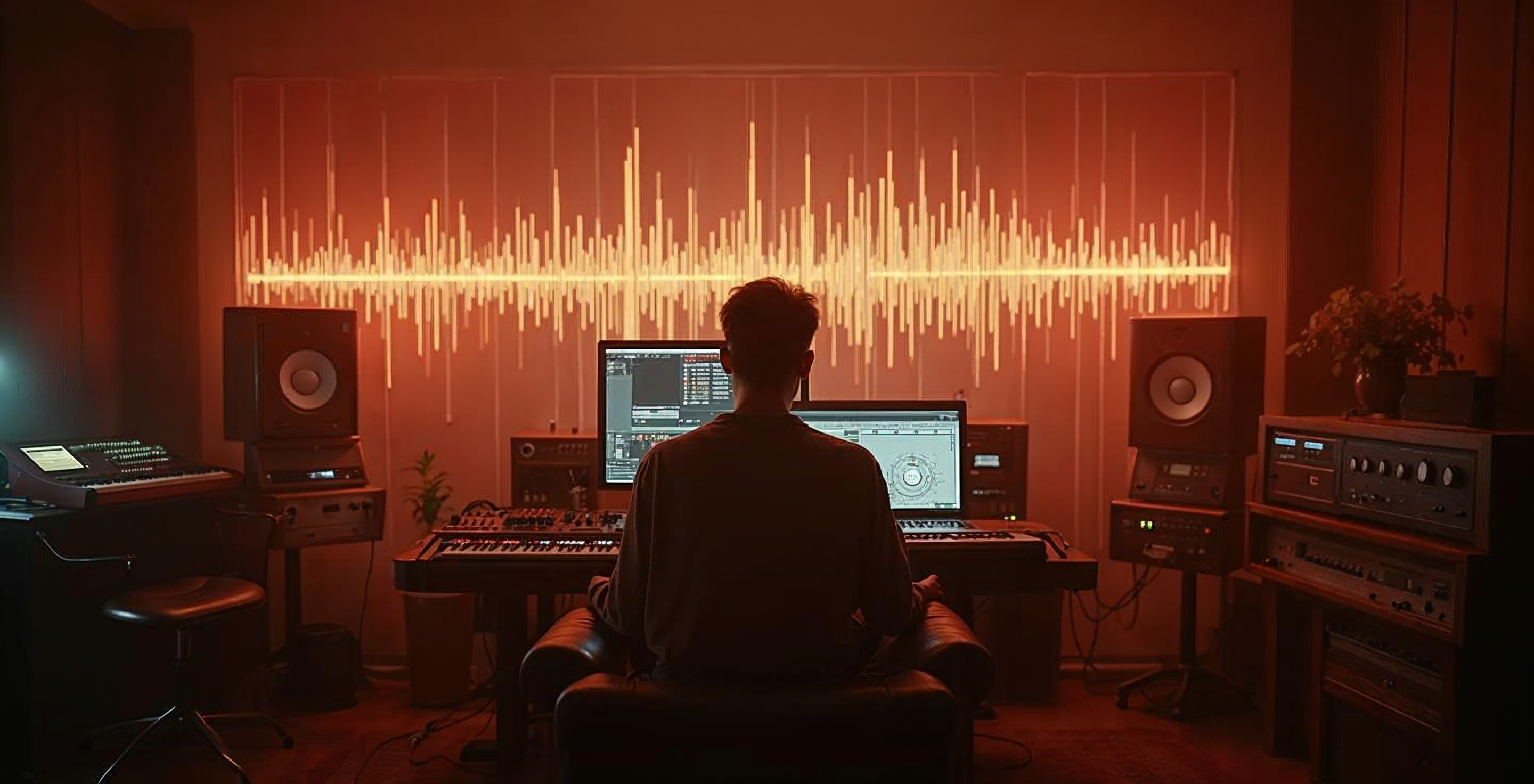Ignite Your Synth Sound Adventure
Crafting synth sounds in Bitwig doesn't have to be a guessing game. If your tracks aren't turning heads, it might be the sounds you're using. Imagine your music cutting through the noise with the right synths—sounds that make listeners stop and pay attention. In this post, you'll discover how to transform your tracks with the perfect synth creations that Bitwig makes possible. Let's dive into the techniques that will set your sound apart. Start with a Solid Foundation

Let's kick off your synth-crafting journey with the basics. Getting these right will set you up for success as you build more complex sounds.
Choosing Your Synth
Picking the right synth is like choosing the perfect paintbrush for your masterpiece. Bitwig offers a variety of synths, each with its own flavor and strengths.
For beginners, the Polysynth is a great starting point. It's straightforward and versatile, perfect for crafting classic synth sounds.
If you're after something more advanced, try the Phase-4. This powerhouse can create everything from lush pads to gritty basses.
Don't forget about the FM-4 for those bell-like tones and metallic textures. It's a bit trickier to use, but the results can be mind-blowing.
Basic Oscillator Settings
Oscillators are the heart of your synth sound. They're the raw material you'll shape into something amazing.
Start with a single oscillator and a simple waveform like a sine or saw. Listen to how each waveform sounds on its own.
-
Set your oscillator to a saw wave
-
Adjust the pitch to taste
-
Try detuning slightly for a fatter sound
Now, add a second oscillator with a different waveform. Mix the two together and hear how they interact. This is where the magic begins!
Remember, less is often more. Don't be afraid to keep things simple at first. You can always add complexity later.
Explore Modulation Magic

Modulation breathes life into your synth sounds. It's the secret sauce that turns a static tone into a dynamic, evolving soundscape.
LFOs and Envelopes
LFOs (Low-Frequency Oscillators) and envelopes are your go-to tools for adding movement to your sounds.
LFOs create repeating patterns of change. Try using an LFO to subtly modulate the pitch of an oscillator. It'll add a nice wobble or vibrato effect.
Envelopes, on the other hand, shape how a sound changes over time. The classic ADSR (Attack, Decay, Sustain, Release) envelope is your best friend here.
-
Set a long attack for a slow fade-in
-
Use a short decay and low sustain for plucky sounds
-
Experiment with release times to control how the sound tails off
Don't be afraid to get creative. Try modulating filter cutoff with an envelope for those classic 'wah' sounds.
Creative Modulation Techniques
Now, let's push the boundaries a bit. Bitwig's modulation system is incredibly flexible, so let's make the most of it.
Try using one LFO to modulate the rate of another LFO. This creates complex, evolving patterns that can add real depth to your sound.
Another cool trick is to use an audio-rate LFO as an oscillator. This can create wild, unpredictable tones that'll make your tracks stand out.
Lastly, experiment with Bitwig's modulators like the Steps or the XY device. These can add rhythmic elements or create complex modulation shapes that'd be hard to achieve with standard LFOs and envelopes.
Sculpting with Filters

Filters are your sonic sculptors. They shape the harmonic content of your sound, letting you carve out space in your mix and create movement.
Understanding Filter Types
Filters come in various flavors, each with its own character. Let's break down the main types:
Low-pass filters cut high frequencies, giving you that classic 'woof' sound. They're great for bass and warm pad sounds.
High-pass filters do the opposite, cutting low frequencies. Use these to thin out sounds or create space in your mix.
Band-pass filters only let a specific range of frequencies through. They're perfect for creating those 'telephone' voice effects or thin, reedy synth sounds.
Don't forget about notch filters. These cut a narrow band of frequencies, which can be great for creative sound design or fixing problematic resonances.
Crafting Unique Filter Effects
Now that you know your filter types, let's get creative with them.
Try automating the cutoff frequency of a low-pass filter. This classic technique can create sweeping builds and drops in your tracks.
Experiment with filter resonance. High resonance can create those squelchy, acid-like sounds that cut through a mix.
For something really unique, try running your sound through multiple filters in series. A low-pass into a high-pass can create interesting band-pass-like effects with a character all their own.
Adding Texture with Effects

Effects can take your synth from good to great. They add depth, space, and character to your sounds.
Reverb and Delay Tips
Reverb and delay are your best friends for creating space and depth in your synth sounds.
With reverb, less is often more. Try a short decay time for adding subtle space without washing out your sound.
For delays, experiment with different timing settings. Try syncing to your track's tempo for rhythmic effects, or use very short delay times for a subtle thickening effect.
A cool trick is to use different effects on the left and right channels. Try a short reverb on one side and a delay on the other for a wide, immersive sound.
Creative Use of Distortion
Distortion isn't just for guitar players. It can add warmth, grit, and character to your synth sounds.
Start subtle. Even a tiny bit of saturation can add warmth and presence to a sound without making it obviously 'distorted'.
For more extreme effects, try different types of distortion. Bitcrushing can create lo-fi, retro vibes, while wave-shaping distortion can produce wild, aggressive tones.
Don't be afraid to stack different distortion types. A subtle tube saturation followed by a more aggressive digital distortion can create complex, layered textures.
Crafting in Bitwig

Bitwig's unique interface and powerful instruments make it a synth designer's playground. Let's dive into how to make the most of it.
Navigating Bitwig's Interface
Bitwig's interface might seem overwhelming at first, but it's designed for intuitive sound crafting.
The device chain is your best friend. It shows you exactly how your sound is being processed, from the initial oscillators through to the final effects.
Get comfortable with the modulation system. The little blue dots next to parameters are your gateway to complex, evolving sounds.
Don't forget about the grid. It's not just for sequencing notes - you can use it to create complex modulation patterns or even build your own instruments.
Using Bitwig's Instruments
Bitwig comes packed with powerful instruments. Let's look at how to use them effectively.
The Polymer is a beast of a synth. It combines three synthesis types—phase distortion, sampling, and subtractive. Try layering these for rich, complex sounds.
For something simpler but no less powerful, check out The Grid. It's a modular environment where you can build your own synths from scratch.
Don't overlook Bitwig's sampler. It's great for creating hybrid sounds that combine synthesis and sampling.
Final Touches and Tips

As we wrap up, let's look at some techniques to take your synth sounds to the next level.
Layering for Depth
Layering is the secret weapon of many professional sound designers. It adds depth and richness to your synths.
Start by layering two similar sounds. Detune them slightly for a fatter, more interesting tone.
Try layering contrasting sounds. A sharp, plucky sound layered with a slow, evolving pad can create interesting textures.
Remember, when layering, EQ is your friend. Use it to carve out space for each layer to shine.
Creating a Signature Sound
Developing your own signature sound is what'll set you apart as a producer.
Experiment with unusual combinations. Try processing a digital synth through analog-style effects, or vice versa.
Don't be afraid to break the rules. If it sounds good, it is good!
Keep a sound design journal. Note down the techniques and settings that lead to sounds you love. Over time, you'll develop your own unique sonic palette.






